
A midweight synthetic jacket is the most versatile of insulation: light and breathable enough to wear on the move; able to function either as a midlayer or a warmth-boosting over-layer on belays and cold summits; and better than standard down in the wet. The 'midweight' category has no hard definition, and the eleven jackets we've reviewed here range from light active insulation that can be worn year-round, to burly winter-only belay refuges. The primary aim of this review is to establish which make the best all-rounders.
We've scored them relative to each other for: warmth; comfort on the move; lightness; fit; features (including hood); and value. While there are no bad options here, each has its stronger and weaker points. The summary table should make clear which jackets are best suited to a particular use and season.
Overall summary
|
Make and model |
Ratings | |
|
Price: £170 Weight: 378g (size L) |
Warmth
Comfort on the move
Lightweight
Fit
Features
Value
Overall
|
|
|
Price: £220 Weight: 480g (size L)
|
Warmth
Comfort on the move
Lightweight
Fit
Features
Value
Overall
|
|
|
Price: £190 Weight: 454g (size S) |
Warmth
Comfort on the move
Lightweight
Fit
Features
Value
Overall
|
|
|
Rab Nebula Price: £160 Weight: 566g (size L) |
Warmth
Comfort on the move
Lightweight
Fit
Features
Value
Overall
|
|
|
Paramo Torres Alturo Price: £170 Weight: 704g (size L)
|
Warmth
Comfort on the move
Lightweight
Fit
Features
Value
Overall
|
|
|
Jottnar Alfar Price: £180 Weight: 443g (size L) |
Warmth
Comfort on the move
Lightweight
Fit
Features
Value
Overall
|
|
|
Mountain Equipment Prophet Jacket Price: £270 Weight: 510g (size L)
|
Warmth
Comfort on the move
Lightweight
Fit
Features
Value
Overall
|
|
|
Alpkit Heiko Price: £85 Weight: 312g (size M) |
Warmth
Comfort on the move
Lightweight
Fit
Features
Value
Overall
|
|
|
Mammut Rime Pro IS Price: £180 Weight: 606g (size L) |
Warmth
Comfort on the move
Lightweight
Fit
Features
Value
Overall
|
|
|
Outdoor Research Uberlayer Hooded Jacket Price: £200 Weight: 516g (size L)
|
Warmth
Comfort on the move
Lightweight
Fit
Features
Value
Overall
|
|
|
Black Diamond Stance Belay Parka Price: £230 Weight: 861g (size L)
|
Warmth
Comfort on the move
Lightweight
Fit
Features
Value
Overall
|
|
|
Montane Hi-Q Luxe Jacket Price: £175 Weight: 575g (size M)
|
Warmth
Comfort on the move
Lightweight
Fit
Features
Value
Overall
|
Fit
The Reversa has a fairly roomy fit in the body - some might say boxy - which helps with fitting on top of other layers. However it also means that the jacket can billow in the wind a fair bit, and because there's no hem adjustment to cinch in tight - just a simple stretch binding - it's not the most storm-worthy of the jackets on test. When things get wild, a shell on top is called for. Length in the hem is short-to-medium at the front, but drops lower at the rear to offer decent bum-and-kidney coverage. Thanks to some really good tailoring, and plenty of length in the sleeves, arm movement for climbing is very free and the jacket stays put beneath a rucksack hipbelt or harness, not tending to pull up when you raise your arms.
Hood
Not the best thing about the Reversa. The hood has a good sculpted shape that fits the head neatly. With the zip done up fully the collar rides up to mouth level to offer plenty of weather protection to the lower face; however the rim of the hood sits high on the head, so unless you're wearing a hat underneath you do tend to get a cold forehead in windy conditions. There's no volume adjustment or wire reinforcement, just a simple stretch rim, so in stormy weather the hood billows about. It won't pull over a helmet readily, so the Reversa isn't great when worn in belay jacket mode. This low profile hood can be worn beneath a helmet instead, but it's not a great fit - particularly if the collar is zipped right up, when the helmet strap feels uncomfortably tight under the chin.
Fabric and Insulation
The most obvious feature of the Reversa, and the thing that sets this model apart, is its ability to be two different jackets in one. Want more warmth? Wear it the normal way round and the windproof Pertex Microlight layer is on the outside, allowing the insulation to work to the max. Want to keep cool while working hard? Stick it on reversed, with the air permeable polyamide inner fabric on the outside, and you've a really well vented insulation piece. In use you can instantly feel the difference between the two. There's a bit of stretch to the outer fabric, and both sides of the jacket are soft to the touch and don't feel or sound too crinkly. Sandwiched between these two different fabrics is Hydroloft Elite Pro, a synthetic insulation developed by Berghaus themselves. In performance terms we can't instantly tell the difference between this and other branded insulation - it feels warm for its weight, quick drying, and still offers a measure of performance when wet. 80g/m2 feels minimal if you're standing around in the cold, but a sensible weight of insulation on the move. Overall this is one of the lighter jackets on test, and that should tell you what to expect in terms of warmth.
Features
There's not a lot going on here, but if you regard the Reversa primarily as a lightweight and fairly minimalist fair weather insulation piece then simplicity is an advantage. The sleeves and hem have just a simple stretch binding rather than any adjustment; this works well at the cuffs; we've already mentioned the drawback of a hem with no adjustment. The main zip has a glove-friendly tab, but only one zipper so you can't unzip from the bottom - only a disadvantage if you're using the Reversa as a belay jacket, which as we've said is not really its remit. On the outer side there are two decent sized zipped hand pockets, which sit high enough up to remain accessible when wearing a rucksack hipbelt or harness. Positioned outside the insulation layer, these don't provide much hand warmth. If you wear the Reversa inside-out, there are no external pockets.
Summary
A jacket at the lighter end of the scale, the Reversa is better considered as active insulation, a replacement for a midweight fleece, rather than a super warm piece for belaying. Its reversibility gives you two different warmth/breathability options in one, and though the hood is not the best for climbers its active cut is well suited to hillwalkers, runners and ultralight backpackers.
Berghaus say:
The men's Reversa Jacket and its cousin the Hypertherm Jacket, have redefined the midlayer... An extremely adaptable synthetic hoody ideal for alpine ascents, fast-packing or stop-start challenges. Hydroloft Elite Pro insulation (80g) provides superb warmth that carries on working even when wet and dries remarkably fast to keep you protected. The jacket's reversibility provides two different systems: one side gives you windproof insulation, while the other side is more breathable, allowing airflow to reduce excess heat when you're working hard. Whether you're pushing yourself in the Cairngorms or looking for a fast ascent on the Matterhorn, this jacket will not disappoint.
Arc'Teryx Atom AR Hoody £220
Fit
Cut a little on the short side, the Atom does not offer quite the same level of lower body protection as some jackets in this test. The hem drops lower at the rear than at the front for added protection, but not by enough to really cover the bum. It feels relatively close-fitting too, without a huge amount of room in the arms for a bent elbow, and fairly tight at the armpits when you're wearing several under-layers. While the wrist is pleasingly simple and low-profile - a stretchy cuff with an added stretchy insert for extra volume - it isn't quite wide enough for easy fitting over glove cuffs. This quite close cut does not make the Atom ideal as a belay jacket to throw on over the top of everything else. For climbing there's not enough movement built into the cut, so when you raise your arms that hemline - already short - rises further. It doesn't take long to slip out from beneath a harness. Overall we think this is best considered a general-use piece rather than a climbing-specific one, and probably best as a replacement for a mid-layer fleece rather than an over-the-top jacket.
Hood
The hood has a simple elasticated brim and one rear volume adjustment toggle which helps give it a nice weathertight fit around the face. However it lacks any sort of stiffened brim, so it can get a bit flappy in a stiff wind. There's just about room to pull it up over a helmet, but at the expense of head movement, and lifting the jacket hem a fair amount. As the hood is simple and low-profile it is slightly more successful worn under a helmet, though again head movement is a bit compromised and the fabric has a very rustly sound right next to your ears. Meanwhile, the collar rides at under-chin level, so there's limited weather protection for the lower face.
Fabric and Insulation
With an unusual matt feel, the face fabric could almost be cotton - except it's 100% nylon. It has a good level of wind resistance, and a reasonably effective DWR finish, though we've found there are signs of beginning to wet out after about 15 minutes of steady light rain, so this is not the most weather-resistant of the jackets on test. Despite its soft feel the fabric seems pretty tough, and so far we've not managed to scuff it at all. Inside is a synthetic Coreloft fill that compresses well for packing, yet has a decent loft for warmth. With three different weights, 120g/m2 in the body where you need it most, then 60g/m2 and 80g/m2 elsewhere, the amount of insulation seems well judged for a midweight jacket, offering a fair amount of warmth when you're stationary without so much that you overheat the minute you start moving. Breathability-wise we've found it performs reasonably well: you don't tend to feel sweaty when walking at a moderate pace, though for prolonged higher output the Atom would not be our no.1 choice.
Features
There are two zipped hand pockets. These are just about big enough for one insulated glove apiece, but you'd struggle to fit something the dimensions of an OS map in them. Unfortunately, when wearing a harness or rucksack hip belt, they are positioned a bit too low on the body to be fully accessible. A single internal pocket of a pretty decent size completes your storage options. The Atom's main zip is fairly light gauge for a jacket, though its insulated baffle is a nice touch. The single zipper gives no access from the bottom.
Summary
It's a fairly warm option, and we like its soft outer fabric. However the Atom's short cut, narrow arms and overall feature set do not best lend it to climbing use, so this feels less like a belay jacket and more like a general insulated mid-layer for all-round use. Since it looks and feels less uncompromisingly technical, we've found ourselves wearing it about town a lot this winter!
Arc'Teryx say:
Significantly warmer and more protective than a fleece hoody, this insulated hoody is breathable enough to be used as a super warm mid-layer on frigid days and protective enough to be an outer layer while belaying or hanging out at camp. An extra thick dose of synthetic Coreloft™ insulates but packs small.
- Fabric: Tyono™ 30 denier shell with DWR treatment - 100% nylon
- Insulation: A mix of Coreloft™ 120 (120g/m²), 80 (80 g/m²), and 60 (60 g/m²) insulation. Made with highly crimped multi-denier siliconized polyester yarn, this lightweight, breathable, and thermally efficient, 100% polyester staple fibre is very compressible and has excellent loft retention.
- Weight: 480g (size L - our measure)
- Sizes: XS - XXL (men) XS - XL (women)
- Articulated elbows
- Gusseted underarms
- Athletic fit for a slimmer more flattering profile
- Helmet compatible StormHood™
- Stretch-knit cuffs
For more info see arcteryx.com
Marmot Astrum Jacket £190
Fit
Our reviewer has tested a good number of Marmot pieces over the years and always found Marmot's size medium was great for him, so he was very surprised to find the Astrum in Medium felt huge. If designed as a belay jacket, to be worn over numerous other layers, this might be OK; but the Astrum is an 'all-day layer' that can be used an outer layer or warm midlayer. We swapped the medium for a small and found this to be a good, trim fit, with arms plenty long enough to climb in and no flappy bulging of the jacket, but it seems odd for a broad shouldered, 5' 10" man with a 41 inch chest to need a size small. The cuffs are elasticated and can be pulled up to the elbows for dumping heat. The whole jacket has been designed with stretch in mind, so the Astrum is great to wear for any athletic, cold-weather pursuit.
Hood
The Astrum has a great hood, it fits well over a variety of helmets, but cinches down quickly and comfortably when worn without one. One point worthy of note is that even with the hood up and the zip fully done up, the jacket's design leaves the face completely exposed. This makes the hood very wearable even when climbing – no limitations on visibility or mobility – but it does not give you that facial protection that you get from many hoods on belay jackets.
Fabric and insulation
The outer material is a rip-stop, stretch nylon with a nice, non-shiny finish to it. The insulation is Marmot's own Thermal R Active, a polyester insulation designed specifically for breathability: being "non-migratory", it won't leak out through looser-woven liners and outers, allowing them to be much more breathable than the fabric of a traditional synthetic duvet. The fill is zoned, with 90g/m2 in the body and top of the arms, and 60g/m2 in the sides of the body and underside of the sleeves. This seems a good compromise for core warmth without excessive heat. The inner is a very soft, breathable nylon knit called "AirExchange"; this feels great next to the skin.
Features
Beyond the good hood, the Astrum is a pretty simple but well thought out design. It has two big "pack pockets" – zipped handwarmer pockets high enough to be above a harness or rucksack hip belt – and a handy internal zipped pocket. In many ways, the main features of the Astrum can be said to be that all the components of the jacket have been designed for breathability and stretch. Our reviewer was pretty sceptical whether Marmot's suggestion of "put it on in the morning and leave it on all day" could really work in the UK, the Astrum just looked too warm, but he has since worn it car to car for a day hiking in the snow on Kinder Scout and when doing a winter climb on Great Gable in rather rough weather. The idea of using wind-permeable fabrics on insulation pieces to make them more breathable may still seem odd, but while not completely convinced this is the answer to all conditions, our reviewer was a lot less sceptical of the concept after a winter of regularly wearing the Astrum.
Summary
Designed to wear all day more or less whatever you're doing in it, due to its use of highly breathable and stretch materials, the Marmot Astrum does indeed go a long way to solving the traditional problem of getting sweaty in synthetic insulated layers. Watch out though for the very eccentric sizing – you may well need to go a size down from your normal.
Marmot say:
This lightweight stretch jacket with active, breathable insulation nearly does it all. Put it on in the morning and leave it on all day.
- Fabric: Lightweight Stretch Shell fabric 100% Nylon Ripstop Stretch 1.7 oz/yd
- Insulation: Thermal R Active 90g/m2 with zoned areas of 60g/m2
- Weight: 454g (size S - our measure)
- Sizes: S - XXL (men) XS - XL (women)
- Attached Hood with Peripheral Cord Adjustment
- Pack Pockets
- Elastic Bound Cuffs
- AirExchange Lining
- Internal Zippered Pocket
- Elastic Drawcord Hem
- Angel-Wing Movement™
For more info see: marmot.com
Rab Nebula Jacket £160
Fit
With plenty of length in the hem the Nebula gives good below-waist coverage, particularly at the rear where the bum is largely covered. Having rock climbed in it on a cold day we find it stays well put under a harness. It is also sized in the body to function as a belay (or lunch stop) jacket worn over multiple other layers. However despite its billing as a belay-worthy jacket the Nebula has relatively a tight fit in the arms, from its close cut at the armpit to its not particularly roomy elbow and forearm. When thrown over several other layers of clothing (even just a shell jacket), the fit here feels quite restrictive. The wrist is the worst in this regard, with no volume adjustment and a very tight elastic cuff that doesn't comfortably stretch over the sleeves of several under-layers. If you're trying to fit it over bulky glove cuffs, forget it. Indeed, for our reviewer it feels a little too tight even on a bare wrist. In an otherwise generously-sized jacket the tightness of the arms is unfortunate, and costs the Nebula a 'Highly Recommended' in this review.
Hood
With a reinforced brim, the hood stands up well to windy conditions. Elastic volume adjusters fine-tune the fit around the face, and their tails exit far enough down that they don't risk whipping you in the eye. Neck coverage is good, with a collar that comes up to chin level. The hood is shaped for a snug fit at the back of the head, but there's only just enough room to pull it up over a helmet, and when you do so it feels very restricted and pulls the hem of the jacket up. For use as a belay jacket the Nebula could really do with a bit more room in the hood.
Fabric and insulation
Rab's Cirrus insulation is one of the new breed of synthetic alternatives to down. Its compressibility and ability to re-loft do feel very down-like; indeed Rab say it's equivalent to 600 fill power duck down. Cirrus doesn't clump up or migrate around, and its very low water uptake makes it particularly suitable for use in the UK's damp climate, and as a belay jacket. For its reasonably modest weight the fill feels really very warm: coupled with this, the shell fabric has a good level of wind resistance. As an example, our reviewer took it cragging and bouldering for several hours on a very windy February day at Bowden Doors. That's a lot of standing around, belaying and spotting; the Nebula stayed on throughout and he never once felt cold. However the construction, with its very many small stitched-through baffles, allows for at least the possibility of cold spots along the stitch lines; it's the same issue you get with the current trend for micro baffles in down jackets. We can't help thinking that the Cirrus insulation might have been better paired with a less-baffled jacket design. That said, when working hard the Nebula does tend to feel too hot in all but the coldest weather, so this jacket is more for low output activity.
Features
Cut into the insulation in order to offer a bit of optional venting, the two hand pockets are big enough to hold bulky ski gloves. In addition, one doubles as a stuff sack for hanging the jacket off your harness. These pockets are positioned high enough for access with a harness or rucksack hip belt, and they have glove-friendly zippers. A single smaller zipped inside pocket is a good place to carry a phone. The main zip is chunky and robust, and though it has only a single zipper (so no bottom opening for belay loop access) it does offer a brushed chinguard.
Summary
The Nebula's Cirrus insulation is superb, with near-down-like loft and warmth, and the added bonus of performance when wet. In terms of the actual design however, while the feature set says Scottish winter belay jacket, in use the tight cut of the cuffs and hood rather undermine this, and we think it is better considered an all-rounder. As a warmth booster for cold weather hillwalking or cragging, for instance, it's great.
Rab say:
The Nebula Jacket is a quick drying, featherless synthetic insulated jacket, using Cirrus™ insulation by 3M, designed as a technical all-rounder perfect for climbing and winter walking. Cirrus™ is a new, breakthrough insulation which combines almost all the key benefits of natural down and synthetic fillings, whilst avoiding their limitations.
Key technical features include a helmet compatible hood for climbing use, a Pertex® Endurance® outer fabric and YKK® zips throughout. The Nebula Jacket is designed as an all-round cold weather piece, yet the technical feature set offers the flexibility of using the jacket as a winter climbing and belay jacket.
- Fabric: Pertex® Endurance® outer fabric
- Insulation: Cirrus™ powered by 3M Featherless insulation(244g/9oz in size Large)
- Weight: 566g (size L - our measure)
- Sizes: S - XXL (men) 08 - 16 (women)
- Stitch through mini-baffle construction
- Helmet compatible hood with flexible polymer peak
- YKK® VISLON® front zip with insulated zip baffle
- 2 YKK® zipped hand pockets, left side doubles as an integrated stuff sack
- 1 YKK® zipped internal security pocket
- Elasticated lyrca cuffs
- Hem drawcord
For more info see rab.equipment
Paramo Torres Alturo Jacket £170
Fit
In a word... roomy. For easy over-layering the Torres Alturo is sized on the massive side in every dimension. We think Paramo may have gone overboard in this regard, so consider going at least one size down on your usual. Our reviewer was rather lost inside his customary size Large; we've tried to make allowances for this in the following... Long in the hem, the jacket sits well below the waist and its dropped tail virtually covers the bum to offer maximum lower body protection. There's loads of length in the arms too, and tons of space overall so that arm movement is unrestricted when climbing. These baggy sleeves don't have the most streamlined, out-of-the-way feel though! The cuffs are very simple; there's no attempt at elastication, just a basic velcro tab for volume control; they are also enormous, easily swallowing the bulkiest glove. With a capacious body too, the Torres Alturo fits effortlessly over as many other layers as you could pile on. In this sense it's the ideal belay jacket. It's a bit of a tent though; the tailoring seems very basic!
Hood
As you'd want from a belay jacket, the hood is cavernous, slipping over a climbing helmet with ease. However the baggy fit is not quite as successful on a helmet-free head, and the three elastic volume adjustment toggles (two at the sides, one at the rear) are a bit fiddly to operate when you're out in the thick of it. To mitigate its size somewhat, the large wired brim helps the hood hold its shape in a storm. Lower face coverage is good too, with a collar that comes up high over the chin.
Fabric and insulation
With 133g/m2 of Nikwax Analogy insulation in the body and arms, the Torres Alturo is matched for warmth only by the Black Diamond Stance. On the hood you get 60g, which feels like plenty if you're wearing a hat underneath; in addition there's an outer layer of 60g/m2 insulation over the pockets, which effectively gives you close to 200g across the front of the body, from chest to hem. This is very much a jacket for stationary use rather than something you'd wear on the move - a haven for belays, summit stops and emergencies. Unsurprisingly though, the Torres Alturo is very heavy, and not particularly packable. As you'd expect from Nikwax, the fill resists water uptake very well, and goes on working even if it does get wet. It's a great choice for a jacket that's designed to be shoved on over everything else in foul conditions. On both the inside and the outside of the Torres Alturo, the fabric is DWR-treated (Nikwax again), so it can be donned over a damp shell and sheds the elements very effectively. It's a very lightweight ripstop material, and though we've not yet managed to tear it the potential is clearly there. On the downside it has a nasty synthetic feel, readily snags in every zip going, and builds up a lot of static. With minimal seams, the outer fabric feels billowy and unconnected with the fill - it's a bit like wearing something made of parachute silk. In looks, the Torres Alturo resembles one of those naff nylon bomber jackets - something to do with the bright orange lining.
Features
Practicality rules here. Two vast external zipped pockets have all the room you'll need for gloves, maps etc. These are positioned high enough to avoid a harness or rucksack hipbelt. The robust main zip has a double zipper for easy belay loop access, and it's backed by a draught excluding strip (which does tend to snag in the zip). Inside is a single massive pocket, which doubles as a stuff sack for hanging this beast off the back of your harness... if you dare.
Summary
There's nothing remotely flash or fashionable about the Torres Alturo; it looks and feels like a sack. This is not a lightweight or compact option, and it's only wearable on the move in seriously cold conditions, so it's not best for the all-rounder role that we've based this test around. However as a belay or emergency jacket it is extremely warm and highly functional - and its Nikwax-made fill is ideal for the moist British winter climate.
Paramo say:
The Torres Alturo Jacket is ideal for high mountain activities which involve sustained low temperatures.
During alpine and winter activities in prolonged cold temperatures, you need fast insulation which is lightweight, packable and offers maximum warmth even when wet. Your outerwear should not interfere with a climbing harness or helmet.
The Torres Alturo is sized to go over a Páramo waterproof to warm you quickly without having to remove layers. It delivers excellent warmth-for-weight and packs into its own internal pocket. The hood is sized to fit over a helmet and the handwarming pockets are accessible while wearing a harness.
- Fabric: Nikwax DWR treatment on outer and inner fabric for overlaying with a Páramo waterproof.
- Insulation: Nikwax Analogy® Insulator fabric with 133g water-repellent synthetic fill
- Weight: 704g (size L - our measure)
- Sizes: S - XXL (men) For women the equivalent is the Torres Medio (XS - XL)
- Helmet-friendly, 60g insulated and fully adjustable fixed hood with wired peak and single-hand pull adjusters.
- Harness-friendly handwarming pockets with 60g insulation, zipped for security.
- Internal OS map-sized storage pocket. Doubles as a stuff pocket with hanging loop for when jacket is not in use.
- Full front opening with two-way zip, internal storm flap and chin guard.
- Hook and loop cuff closure for precise adjustment.
- Scooped tail for additional protection.
- Adjustable hem to retain body heat.
For more info see paramo-clothing.com
Jottnar Alfar £180
Fit
As a piece that's designed to serve either as a mid layer or an outer layer, depending on conditions, the Alfar has a closer and more streamlined fit than most of the other jackets on test. This is light insulation you'll wear on the move, rather than an over-the-top jacket for belays and summit stops. As such there's not much room for layering underneath - a base layer pretty much does it. The rear hem drops to mid-bum level, offering good kidney protection. Unfortunately the front is a fair bit shorter, sitting bang at waist height. This is really too short for a jacket which aims to be climbable in, as it soon pulls up from under a harness once you start waving your arms about. In our summary table the Alfar would have scored much higher for fit if it had been cut a few centimetres longer. This is a shame, as we really like it in principle! The arms are very close fitting, basically skin tight, but they're so stretchy that movement is unrestricted. It's also very long in the arm, with thumb loops for back-of-hand coverage.
Hood
The Alfar's hood has a fairly close fit on a helmet-free head, and though the small face opening does restrict the peripheral vision a bit it also makes for plenty of weather protection, with a high collar that rides right up at mouth level. Its simple elasticated hem and stretchy fleece panels mean that the hood can at a pinch be pulled up over a helmet, though at the expense of lifting the hem of the body. With no volume adjustment or wire peak to create bulk, the hood is better employed under a helmet. Think micro fleece rather than belay jacket!
Fabric and insulation
A hybrid construction sets the Alfar apart from the other jackets on review. The main body offers 120g/m2 of synthetic fill, a good honest weight for winter warmth. Its nylon face fabric is both lightweight and wind-resistant, with a DWR finish to help keep your core dry. To avoid overheating on the move, Jottnar have dispensed with the duvet fill elsewhere, replacing it with side panels and sleeves of soft, thick Polartec Powerstretch Pro. This has loads of stretch for total freedom of movement, and plenty of warmth for its weight too - but since it offers practically no wind resistance you can comfortably wear the Alfar as a stand-alone layer for high output activities. When it's too cold and windy for the Powerstretch, the Alfar becomes a mid-layer under a waterproof shell. It's a good solution, and we've used it very comfortably on hillwalking and climbing days. However in winter an additional belay jacket layer is still required. We did say the Alfar was a bit of an oddity in this review.
Features
Cut into the insulation to create a bit of optional venting, the two zipped handpockets are sized to hold thinny gloves but not a map or bulkier ski gloves. If you're wearing the Alfar in midlayer mode this isn't an issue, but it's not ideal if it is your outer layer and these are your only pockets. An additional small inside zipped pocket is enough for a smartphone. The main zip is narrow gauge, which is perfectly adequate for a jacket of this kind, and it's backed by an anti-snag storm flap - a nice touch.
Summary
Versatile lightweight insulation that's designed to be worn on the move, the Alfar's hybrid construction makes it quite hard to compare with the other duvet-style jackets in this review. We really like the idea, but wish the hem were longer and the pockets larger. It's the shortness in the hem that costs it a 'highly recommended'. The Alfar can have a role year-round, but in winter it is better considered as a souped-up midlayer than a stand-alone outer.
Jottnar say:
Worn either as an outer or mid-layer, the Alfar is aimed at fast-paced aerobic activity in cold climates where freedom of movement is crucial. Your core is insulated with a breathable 120g/m² synthetic fill wrapped in a windproof, Durable Water Repellent (DWR) treated, micro rip-stop nylon. Polartec® Powerstretch Pro® sleeves and side panels optimise stretch and breathability. Thumb loops, harness compatible pockets and a close-fitting insulated under-helmet hood make the Alfar a multi-functional, technical mountain essential.
Updates for 2017 include: adapted panelling for improved fit and improved cuff configuration.
- Fabric: Windproof, micro rip-stop nylon main body outer with DWR finish
- Insulation: 120g/m² main body synthetic, breathable insulation; Polartec® Powerstretch Pro® sleeves and side panels
- Weight: 443g (size L - our measure)
- Sizes: S - XL (men) XS - L (women)
- Anti snag hem draw cords
- Roll-away thumb loops and back-of-hand protection
- Inner chest pocket for valuables storage
- Harness compatible pockets with YKK® zips and front facing insulation
- Panelled, elasticated hood with 120g/m² of synthetic, breathable insulation in centre; stretch Polartec ® Powerstretch Pro® at sides and softened zip guard
- YKK® centre front zip
- Corded, glove compatible zip pulls
- One-handed, elastic hem draw cord operation
For more info see jottnar.com
Mountain Equipment Prophet Jacket £270
Fit
With a slightly more streamlined fit and thinner fill than ME's popular Citadel and Fitzroy jackets, the Prophet is more something that you'd wear on the move than an over-the-top belay-only jacket - though there's nothing stopping you using it as such, since the cut is still roomy enough to layer over the top of a shell. The cut is medium-long in the body by the standards of this review, with a hem that sits comfortably below the waist at the front and drops lower at the rear to give at least mid-buttock coverage. As a result the Prophet offers plenty of foul weather protection, and pairs well with a harness. The sleeves are pretty roomy, with a good articulated cut that makes for free arm movement when climbing, without risk of the hem lifting. At the wrist, the cuffs are wide enough to accommodate a bulky ski glove, and the combination of partial elastication and velcro fastener makes for a snug closure.
Hood
Mountain Equipment tend to be known for well-cut hoods, and the Prophet is no exception. When climbing, the hood has sufficient room to fit over a helmet without restricting head movement. If you're not wearing a helmet, elastic volume adjusters cinch everything in nice and tight onto the head and create a good close weather-beating seal around the face (the tails exit low enough on the collar to spare you from being whipped in the eye). In foul conditions the collar rides up to mid-chin level for lower face protection, while the laminated-and-wired brim holds its shape really solidly in the wind, and creates something of a peak to help keep drips and spindrift out of your eyes.
Fabric and insulation
While a fill throughout of only 80g/m2 does not seem like much, for its fairly modest weight the Prophet's Primaloft Gold packs a punch, offering top-of-the-class insulation and moisture management performance. Basically put, it resists water uptake; it's warm even if it does get wet; it is quick drying; and it's breathable enough that you don't feel unduly sweaty when on the move. Compared to many synthetic fills, Primaloft Gold does not require as much stitching to hold it in place - and less stitching means fewer potential cold spots. In use we think the Prophet offers the sort of warmth we'd normally associate with a heavier, thicker jacket such as a Fitzroy. There are limits of course. In really cold weather it's not as much of a mega-insulated refuge as the Black Diamond Stance, for instance - but then it's far more packable and lot more practical for wearing on the move. The Prophet's balance of high-ish warmth and low-ish weight makes it one of the most versatile synthetic jackets we've worn. To seal the deal on its top spec credentials, Mountain Equipment have gone with Gore Thermium fabric. With its taped seams and awesome DWR, this laminate is the next best thing to fully waterproof - just what you need in a jacket you might want to stick on over everything else in foul conditions. Seam taping also helps keep out the wind, which is an obvious insulation boost for minimal weight gain. This fabric is tough and feels really breathable too - something we were surprised about, given its weatherproofness. The only downside is its crinkly feel. You have to get used to walking around with the constant sound of crisp packets (it's worst in the hood, next to your ears).
Features
The two zipped hand pockets sit above harness/hipbelt level, and offer enough room for thick insulated gloves or an OS map. One doubles as a stuff sack, and the resulting bundle is satisfyingly small when hanging from your harness. A single napoleon pocket gives additional space for small items, while the one spacious internal pocket is mesh-lined to help with drying damp gloves. The robust main zip has twin zippers for easy belay access, and an anti-snag, lightly-insulated internal storm flap. Last but not least, the hem drawcords are split rather than looped, to avoid inadvertent gear snagging.
Summary
Its warmth-for-weight and weather proofing are second to none, while the cut, features and hood all feel absolutely spot on for winter mountain use. In all but the coldest UK conditions this versatile wee beastie is all the jacket most of us will need, and it's not too heavy for bridge season use either. But the Prophet's top-of-the-range fabric and insulation come at a price... and it is eye watering. For overall performance this deserves Best in Test. At that price it really ought to!
Mountain Equipment say:
An ultra-light, highly protective and seam-sealed PrimaLoft® jacket that provides reliable insulation in the most difficult conditions.
With a rain-resistant membrane and seam-sealed construction this revolutionary GORE® THERMIUM™ product tips the scales at little more than half a kilo yet will prove to be a reliable refuge on rime blasted Scottish mixed test pieces and spindrift swept Alaskan couloirs.
- Fabric: GORE® THERMIUM™ ultralight 10 denier shell is durably weather resistant against light rain and snow
- Insulation: PrimaLoft® GOLD insulation [80g throughout]
- Weight: 510g (size L - our measure)
- Sizes: S - XXL (men's version only)
- Seam-sealed construction
- Mountain HC insulated hood with stiffened visor
- Alpine fit with pre-shaped and articulated sleeves
- 2-way YKK® moulded centre front zip with insulated rear baffle
- 2 zipped hand warmer pockets
- Napoleon chest pocket
- Internal zipped security pocket
- Adjustable cuffs and dual tether hem drawcords
For more info see mountain-equipment.co.uk
Alpkit Heiko £85
Fit
Fit is always very personal to your body shape, but our reviewer was very impressed with the fit of the Alpkit Heiko in medium; Alpkit's size guide seemed to work perfectly. The jacket is trim without ever being tight, the sleeves are plenty long enough with great articulation - the jacket has been used a lot winter rock climbing and it neither pulls out of the harness nor the sleeves fall down a long way, even when reaching for holds at full stretch. The collar snugs up below the chin but has not caused any chafing issues.
Hood
The Heiko does not have a hood; take a hat. A hood isn't always necessary, in fact layering is often easier and less bulky if at least some of your clothes have no hood; however on an insulated jacket you feel the lack more often than not. Perhaps in future Alpkit should consider doing a hooded version as well - one that can pull over a helmet. The Heiko already makes a fantastic superlight belay jacket for cooler climbing days, but with a hood it would be perfect.
Fabric and insulation
The Heiko uses a light, shiny polyester inside and out, with 60 grams per square metre of Primaloft Silver insulation in between (it's actually quite tricky to find much useful information on the different types of Primaloft, but this is their mid-range stuff, and not optimised for breathability). The Primaloft is held in place by what we thought was an aesthetically pleasing square quilting. The outer is DWR treated and seems completely un-bothered by drizzle and also survived a number of brushes with gritstone crack climbs unscathed. It is also windproof and in dry, windy conditions gives a surprising amount of warmth for such a light jacket (312g in medium). Primaloft is light, compressible and an efficient insulation but Primaloft Silver has not been designed with breathability as its main aim. Like many synthetic puffy jackets, the Heiko can get sweaty inside if you are, for example, hiking hard in it. It does many things better than a warm fleece, but breathing is not one of them.
Features
The Heiko is a simple jacket - it has two handwarmer pockets lower on the body (one side of which is lined with microfleece, and it sounds almost churlish to complain, but if both sides were fleece they would be snugglier) and one chest pocket. The jacket packs away into the chest pocket which also has a karabiner loop on it, the reasonably compact package clips easily to the back of your harness.
Summary
The Heiko is an excellent, lightweight insulation jacket as long as you are happy not having a hood. Our reviewer found it great as a booster layer when backpacking and perfect to wear on windy crag tops when belaying, but a bit too sweaty to wear regularly whilst on the move. It is a very competitive price, but perhaps due to using branded insulation, not quite as jaw-droppingly good value as we have become used to from Alpkit.
Alpkit say:
Warm, windproof and packable; Heiko is your dependable friend when the temperature drops or the wind picks up, cutting out the chill and keeping you comfortable during light activity.
The quilted Primaloft insulation keeps a low profile, making it easy to layer under a shell when needs must. And it is easy to stow too as Heiko packs into its chest pocket. The benefit of Primaloft synthetic insulation is it retains its thermal properties well even when wet – and it shouldn't take too long to dry out either.
We've used a soft touch polyester fabric for the inner and outer, which feels great next to the skin but with a DWR coating it is still tough enough for the job at hand.
- Fabric: 100% Polyester inside and out (20d, 45 gsm) C6 DWR finish
- Insulation: 60 gsm Primaloft Silver insulation
- Weight: 312g (Medium - our measure)
- Sizes: S - XL (men) 8-14 (women)
- Lycra bound cuffs and adjustable hem drawcord
- Articulated arms cut for movement
- Internal insulated zip flap with chin guard
- Chest pocket and 2 hand warmer pockets
- Packs into chest pocket
For more info see alpkit.com
Mammut Rime Pro IS £180
Fit
The Rime Pro has a roomy fit making it feel more like a top layer jacket than a mid-layer and it is designed to be worn over a hard shell if required. This makes it useful for throwing on for extra warmth at belays or during rests in activity. The fit is on the baggy side when worn on its own but it does have good waist drawcord system to cinch that tight. In our previous review, Charlie Boscoe found the velcro wrist closure a slight negative however for me this was a good feature since it allowed for more flexibility - tight over gloves in extreme conditions, loose for a bit of venting if it is getting warm. Hem length is generous, offering plenty of lower body coverage and staying securely in place below a harness if you find yourself wearing it when climbing. There is little shaping in the middle of the jacket, making it very much a 'male' fit and there is only a Rime Tour (hoodless and lighter version) available in a women's fit. The sleeves are really nicely tailored for easy movement.
Hood
An excellent feature is the huge hood, which is easily big enough to swallow a helmet, but which also has a basic tightening system to shrink it secured by a drawcord around the back. It is well thought out although the collar does ride quite high when fully closed, which helps protect the lower face but does feel a little uncomfortable on the chin. The baggy hood is also quite floppy and also less fashion-worthy when you haven't got a helmet on (though that probably won't worry many people).
Fabric and insulation
The Rime Pro uses a zoned fabric system with a water-repellent Pertex Endurance on the shoulder and upper arms sections, the areas most exposed to weather and snowmelt, and a more breathable Pertex Microlight for the back and under arm areas. This makes it excellent as a stand-alone top layer although you would want a hard shell for extreme conditions. It has body-mapped insulation too, with 100g/m2 PrimaLoft Silver in the body and upper arms and 80 g/m2 in the sides and under arm areas where you need it less. This makes it warm although perhaps not quite as warm as you might expect for something weighing 606g, and it isn't the most packable of jackets. Primaloft Silver is not optimised for breathability and moisture transport, so the Rime Pro IS is possibly not the ideal jacket for prolonged periods of high output (Primaloft Gold is, ahem, the gold standard in this regard).
Features
The pockets are plentiful and well positioned. A useful Napoleon pocket is good for a phone although it is quite deep which makes retrieval of the phone tricky with gloves on. The main pockets have a good fleece lining making them feel extra warm on gloveless hands. Inside are two deep pouch pockets where you can pre-warm gloves or rock shoes. The front zip is two-way which makes for easy belaying. It lacks a pocket stuff sack which is useful for easy carrying when you're not using a pack.
Summary
An efficient and well designed jacket that makes both a good all rounder and a reasonably warm top layer for belay and summit lunch duty. The pockets and hood are well designed, but for the only average amount of insulation it offers this is not the lightest or most portable jacket available.
Mammut say:
The Rime Pro IS Hooded Jacket Men is a warm, versatile insulating jacket. It can be used for everything from ice climbing to mountain tours to everyday recreational use. The cut of the jacket makes it possible to pull it on over a hard shell jacket and is perfect for short breaks or setting up a belay point. The logically functional material combination of the Rime Pro is fantastic.
Highly water-repellent and robust Pertex® Endurance is used on the shoulders, upper arms and hood, while lightweight, breathable Pertex® Microlight is used on the rear and under the arms. The breathable Primaloft® insulation also works according to the bodymapping principle and uses two qualities to provide the perfect body climate.
- Fabric: Pertex® Endurance and Pertex® Microlight
- Insulation: 100 g/m2 and 80 g/m2 PrimaLoft Silver
- Weight: 606g (size L - our measure)
- Sizes: S - XXXL (men's version only)
- Wide cut to allow the jacket to be worn over a Hard Shell as well
- Anatomically tailored, adjustable and helmet-compatible hood
- 1 chest pocket with zip
- 2 Powermesh inner pockets
- 2 side pockets with zips
- 2-way front zip
- Preformed elbows
- Hook and loop cuffs
For more info see: mammut.ch
Outdoor Research Uberlayer Hooded Jacket £200
Fit
With a medium/long body, the Uberlayer offers reasonable midriff and kidney weather protection, though other jackets do give slightly more - particularly over the bum. There's plenty of length in the hem to pull down under a harness, but unfortunately articulation in the sleeves is not great, so when you raise your arms to climb the hem soon slips out. Movement in the arms feels a little restricted in some directions, and a close fit in the armpit makes it hard to layer this jacket over anything bulky. On the other hand the body has a belay jacket-style roominess which can get a little flappy in the wind. As this jacket behaves more like a midlayer fleece than the majority in this test, a closer more 'active' cut in the body might have been more appropriate.
Hood
The hood has simplicity in its favour, but that's the best we can say. There's room to fit it over a helmet - but only just, so head movement can feel a little restricted. When you're not wearing a helmet the single rear toggle takes in the spare volume successfully, but it is a fiddle to operate with gloves. The part-wired peak sits snug across the forehead, which is nice, but at the same time the scooped sides of the hood leave your cheeks entirely exposed, while the collar rides so low that your chin (even a bit of neck) is also uncovered. In short, cold wind and spindrift have a free rein on most of your face. For winter mountain use it's not a winner.
Fabric and insulation
Breathability on the move is the Uberlayer's forte. The idea is that you'll be wearing this active layer all day, both sweating hard and stationary. When treated as a warm-ish midlayer, a replacement for a fleece or softshell, we've found we never seem to get damp and sweaty in the way that some synthetic jackets can feel. For insulation Outdoor Research have used Polartec Alpha, which boasts fleece-like levels of breathability. Paired with an airy mesh inner, it's an effective combination. Our reviewer hasn't found it particularly warm though, and for its 98g/m2 the fill has much less loft than most. To re-iterate, this is best treated as a midlayer, which means that in winter you'll need to bring an additional jacket for use on top. You'd expect the outer fabric's DWR to perform well in a brand new insulated jacket (and to wear off a bit over time), but having worn the Uberlayer minus a shell in more than one prolonged shower our reviewer was particularly impressed with how well it beads. Any moisture that does get through to the insulation shouldn't be a show stopper, since Polartec Alpha is designed to be highly water repellent in order to keep on performing even when the jacket is wet.
Features
With a fleece front for comfort and a mesh back for venting, the two zipped handwarmer pockets are just about high enough to remain accessible under a harness or rucksack hipbelt; however they are fairly small, and it's a squeeze to carry ski gloves (an OS map is impossible). One pocket doubles as the stuff sack, and though it's a bit of a battle to cram it all in, this does make a nice small bundle to hang off your harness. A third mesh-lined napoleon pocket is well sized for a phone, while inside the jacket are two very spacious stretchy mesh pockets which work well for warming up your climbing gloves at the belay. The chunky, durable main zip has double zippers for belay loop access, and a snag-free internal storm flap.
Summary
The Uberlayer is in rather a different category to most in this review. Superbly breathable, but not very warm, it is best treated as a high-spec replacement for a midlayer fleece rather than a traditional synthetic duvet. If used as an outer layer it is not well suited to winter mountains, but would come into its own for summer and bridge season use. For what it is though, it looks pricey.
Outdoor Research say:
With the extremely breathable polyester stretch mesh lining, the M's/W's Uberlayer Hooded Jacket offers outstanding breathability. The jacket reliably transports excess moisture during aerobic activity to the outside but holds the body heat during downtime. Extremely compressible and water repellent synthetic Polartec®Alpha® is used for insulation. Perfect for climbing as well as ski touring, this backcountry chameleon combines the best of two worlds: the warmth of synthetic insulation and the breathability and quick-drying properties of functional fleece. As a result, outdoor enthusiasts get by without having to add, remove, or adjust layers.
- Fabric: 100% nylon 30D stretch fabric / 100% polyester mesh lining
- Insulation: Polartec® Hi-Pile Alpha Isolation 100% polyester, 98g/m2
- Weight: 516g (size L - our measure)
- Sizes: S - XXL (men) XS - XL (women)
- Water-resistant, wind-resistant, breathable
- Lightweight
- Double separating center front zipper
- Two zippered hand pockets
- Zippered Napoleon pocket
- Front zipper with internal storm flap
- Two internal Shove-It™ pockets
- Adjustable wire-brimmed Halo hood fits over helmet
- Lycra cuffs
- Drawcord hem
For more info see: outdoorresearch.com
Black Diamond Stance Belay Parka £230
Fit
What's that coming over the hill, is it a monster? No, it's a Stance. Black Diamond's burliest belay jacket, this super-warm beast is a full-on winter refuge that's sized to fit over multiple layers. Wearing this makes you feel like you're in a sumo suit. The body is cut long, sitting well below the waist at the front and almost covering the bum for maximum lower body protection. You'd be unlikely to wear it under a harness - it's just too warm to climb in - but having tested it for the purposes of the review we find the hem stays put. It's super long in the sleeves too - there's no danger of them riding up when you climb. The simple part-elasticated cuff fits easily over a bulky glove, and the only disadvantage here is that with no form of adjustment the sleeve does tend to swallow your hand.
Hood
As a maker of helmets you'd hope that Black Diamond could come up with a decent hood in that regard, and the Stance doesn't disappoint. Its huge hood swallows a helmet with ease, and allows for unhindered head movement. Operable with gloves, the single rear adjustment toggle does a good job of pulling everything in tight around your face for maximum wind protection when belaying, but when you remove your helmet the unwired brim flaps in the wind and has a tendency to flop down over your eyes. Basically, the hood on the Stance is optimised for helmet wearing only. With a thick collar that comes up to chin level your neck stays very warm, but other jackets offer a little more lower face protection.
Fabric and insulation
In a review of mid-weight jackets the Stance is clearly out of place; but considered on its own merits there's a lot to be said for it. A lot being the operative word. Two layers of 80g/m2 Primaloft Silver insulation throughout create a mega-thick and very effective warmth cocoon; it feels like wearing a sleeping bag, or two lesser jackets on top of each other. Having worn the Stance on a number of wild Scottish winter days with an appreciable chill factor, our reviewer has yet to feel even remotely chilly. It would take temperatures below those the UK can generally muster to test it to its limits. Of course that sheer amount of fill has an obvious drawback, a gargantuan weight and bulk. On one day we took it out with a 25 litre pack; it filled half the volume of the bag. You're not going to be hanging this off your harness for a sack free ascent! Wearing the Stance on the move for anything but a slow walk is not an option; since Primaloft Silver is not optimised for moisture management or breathability, you'd soon get wet from the inside. To keep moisture at bay from without, the lightweight Pertex face fabric has a decent DWR. Snow is no issue, and if it's raining then it'll be too warm for the Stance anyway.
Features
Sadly the four external pockets are poor. The handwarmer pockets are positioned so low that they don't make for a natural hands-in-pockets posture. Completely inaccessible under a harness or rucksack hipbelt, they are also on the small side for bulky gloves. A pair of napoleon pockets on the chest have a bit more space inside, but annoyingly small openings that make it a battle to cram stuff in. One of these has a stretchy mesh 'media pocket' sewn in, but it's way too small for a standard smartphone. On the inside are two simple unzipped sleeves for gloves. These are a touch too small for secure storage, and positioned too low so that the bulk is right in the way of your harness. In order to access said harness the medium-gauge main zip is fitted with a two-way zipper; it also has a narrow snag-free internal storm flap.
Summary
By far the warmest jacket here, the Stance might do well in a review of thick belay jackets but inevitably scores low as an all-rounder. The amount of insulation on offer makes for a bulky, heavy load, while if it's worn on the go it's simply too much for most situations. But playing to its strengths, this specialist belay behemoth would be hard to beat if you anticipate spending long hours stationary in sub-zero conditions, be that a Scottish winter belay, continental style icefall cragging, cold weather bouldering or winter wild camping and snow holing.
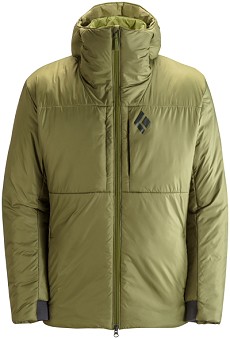
Black Diamond say:
Designed to endure bail-worthy belay conditions on single-pitch ice routes and massive alpine objectives alike, the Black Diamond Stance Belay Parka lets you hunker down while your partner battles it out on the sharp end. Our warmest insulated jacket, the Stance is filled with two layers of lightweight, highly compressible PrimaLoft Silver Hi-Loft insulation that provide sleeping-bag level warmth, even when wet. A two-way center front zipper lets you wear the jacket over your harness while belaying, and oversized hand, chest and internal drop pockets accommodate gloves, water bottles and other essentials.
- Fabric: Pertex® Classic 40d plain-weave with DWR finish (65 gsm, 100% nylon)
- Insulation: PrimaLoft® Silver Hi-Loft Insulation 80 gsm (2-layer)
- Weight: 861g (size L - our measure)
- Sizes: S - XL (men) XS - XL (women)
- Adjustable, climbing-helmet-compatible hood
- Lightweight stretch cuffs
- Two-way front zipper
- Insulated windflap
- Drawcord hem
- Two zip hand pockets, zip chest pockets, two internal drop pockets and internal stretch media pocket
- Primary fabric is bluesign approved
For more info see: eu.blackdiamondequipment.com
Montane Hi-Q Luxe Jacket £175
Fit
The Hi-Q Luxe jacket has a fit that allows the garment to be used primarily as a mid layer, although depending on your layering system and whether you intend to wear a helmet it can also function as an outer layer insulation jacket. It's the perfect jacket if you like to winter climb with insulation under your outer shell. The rear and front of the jacket sit low and swinging an axe above your head does not pull the jacket out from under a harness. The wrist cuffs turn slightly in on themselves, with an elasticated fabric to keep the opening flush with the skin or glove. This design does keep the draught at bay. However there is a drawback for winter use: if you are wearing the jacket as an outer layer and you happen to be using an axe to clear snow overhead, you will soon find snow collecting in the wrist openings. This then melts and runs up your arm, which isn't ideal. The solution is to wear a shell on top.
Hood
The hood on the Hi-Q Luxe has an excellent snug fit covering most of the head, leaving only the face exposed. Its close fit means it's an under-helmet hood, and that's the main reason I would use this jacket as a mid layer. If you were wearing it as a belay jacket on top of everything else, then a hood sized to fit over a helmet would obviously be better. Around the rim an elasticated material keeps the hood tight against the face, although not restrictively so, thus keeping the weather out and sealing the warmth in.
Fabric and insulation
Montane say the outer material is 100% windproof PERTEX Quantum Rip-stop. The material seems reasonably durable and it certainly functions well in windy conditions on the Scottish Munros during winter. Our reviewer has used it as an outer layer when out hill walking. On the odd occasion the jacket did get wet, mostly from the inside out, it did stay very warm with almost no loss in insulating properties. This is thanks to the PrimaLoft GOLD Luxe synthetic fill, which seems to do its job rather well.
Features
Two reasonably sized hand pockets will accommodate everything bar the bulkiest gloves. The chest pocket is large enough to hold a standard map and compass or perfect for slipping your mobile into. The entire jacket stuffs down into its own pocket too, although when wet we've had a few issues doing this so end up just stuffing it in the rucksack.
Summary
The Hi-Q Luxe is a fairly versatile jacket that can function both as a mid layer or an outer layer. The fairly close fit however definitely favours the mid-layer role. The only downside in the cut is around the wrists, where it is possible for snow to collect if using it as an outer layer. It has an excellent under-helmet hood, and enough pockets to store all the essentials. At 575g it's not the lightest of the jackets on test, but its also straddles the line between mid layer and outer layer, so it's a perfectly respectable weight in that respect.
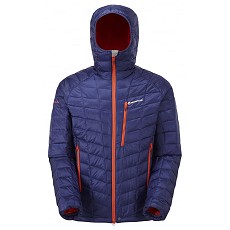
Montane say:
Designed and developed for all-day comfort and freedom, the Hi-Q Luxe Jacket harnesses the unique properties of innovative PrimaLoft® GOLD Luxe synthetic insulation - exceptional warmth, compressibility and lightweight down-style lofting combined with the superior wet weather performance of traditional PrimaLoft® synthetic insulation fibres.
- Versatile, for all-day comfort
- Packable - stuffs into own pocket
- Superb warmth
- Unique 'down-style' synthetic insulation
- Micro baffle construction
- Water resistant, windproof outer fabric
- Insulated pre-elasticated under-helmet hood
- 2 hand-warmer pockets
- External chest pocket
For more info see: https://www.montane.co.uk



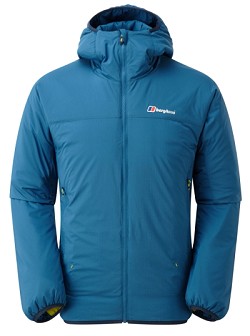
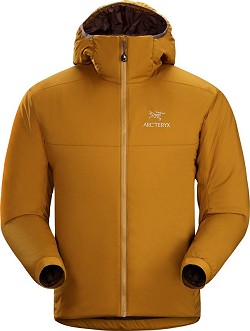

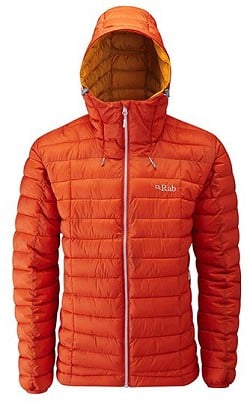
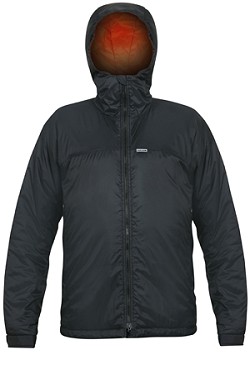
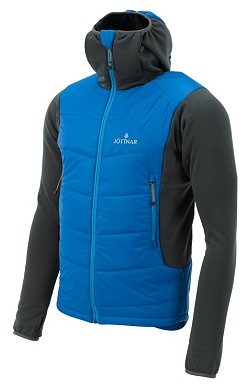

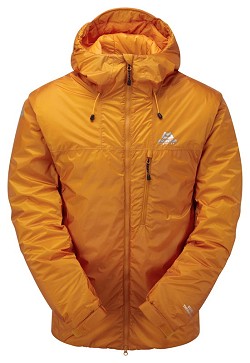

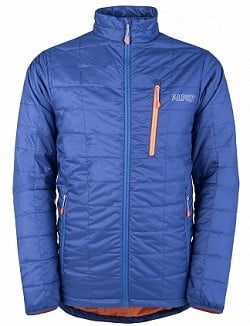
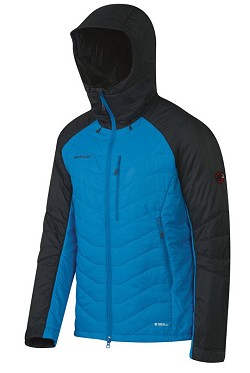
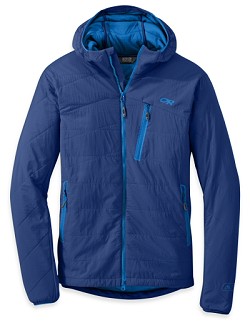

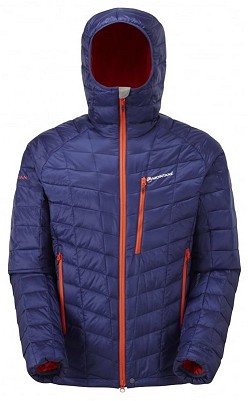

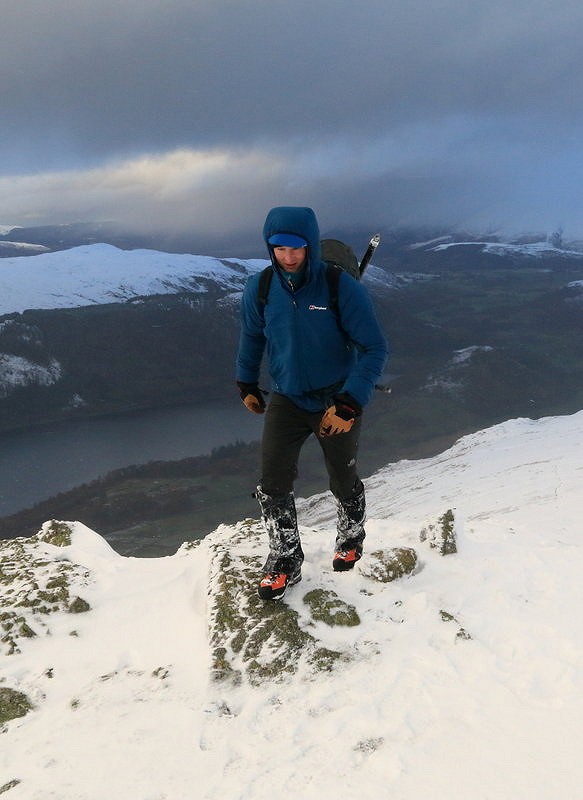
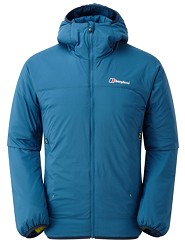
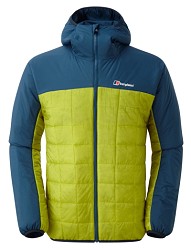

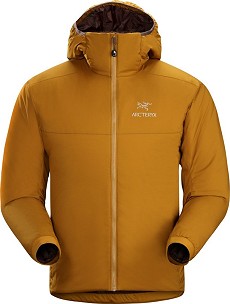

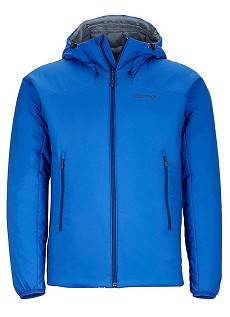

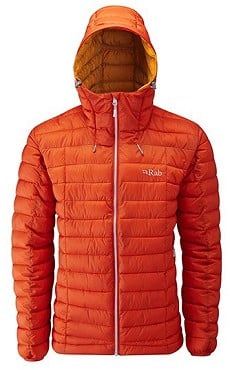
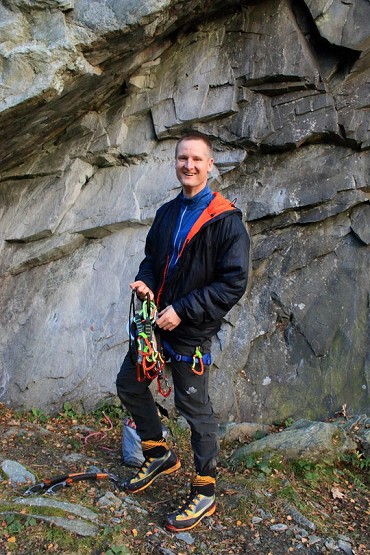
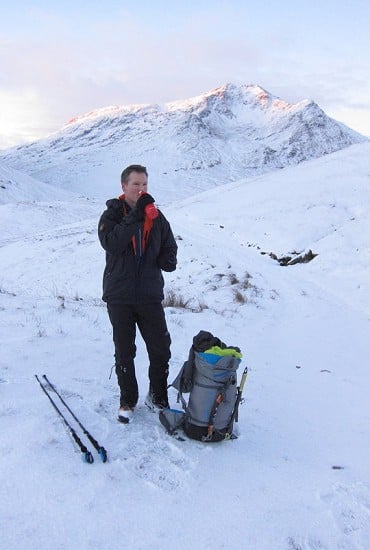
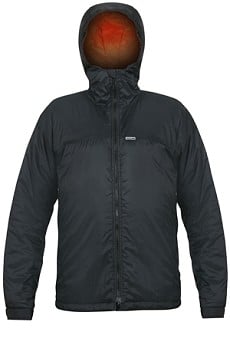

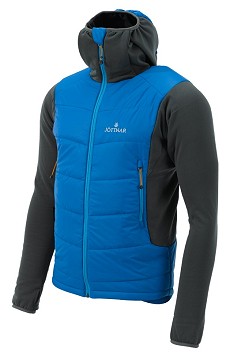

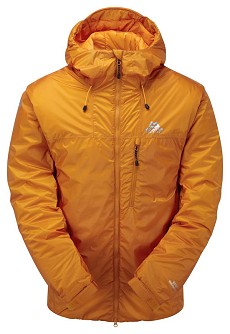

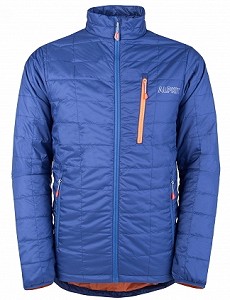



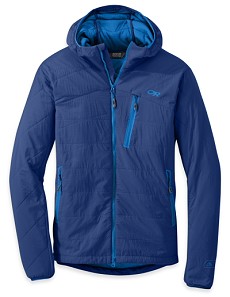


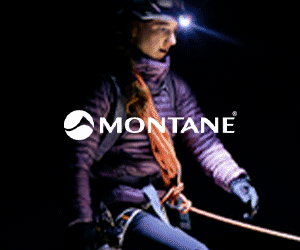



















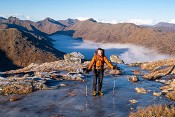


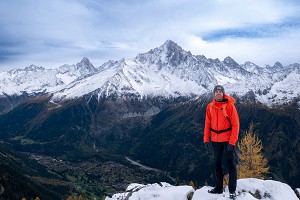





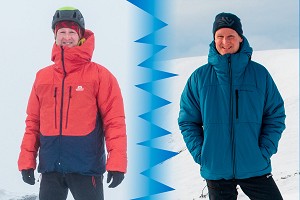

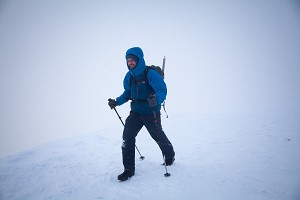

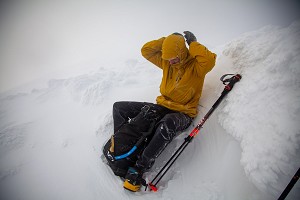
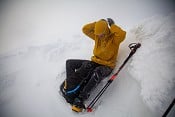


Comments